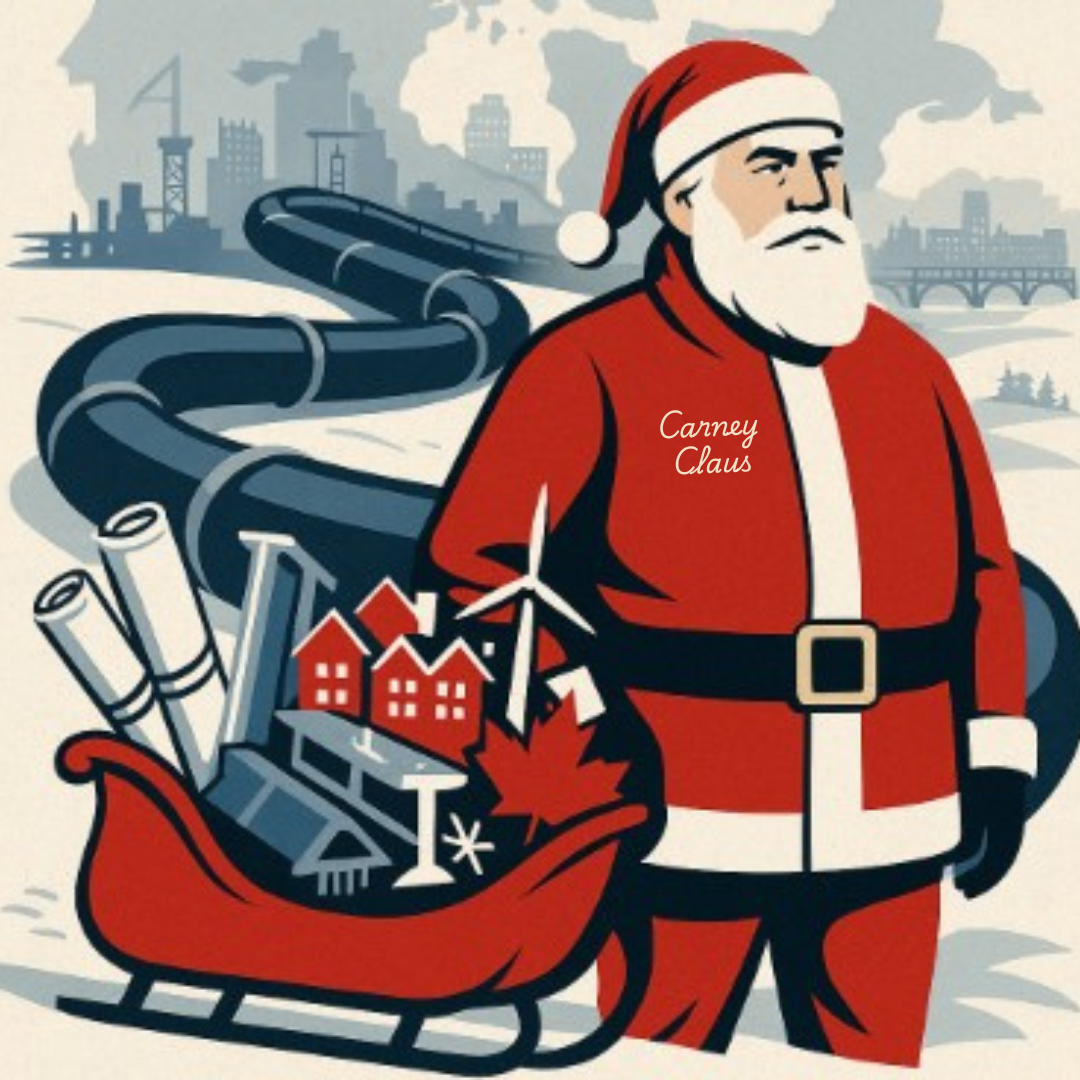🎅 Lions and Tigers and Oil Pipelines, Oh My!
June 5, 2025

Canada’s premiers just wrapped up a First Ministers’ meeting in Saskatoon — and for once, it didn’t feel like political theatre. It felt serious. Collaborative. Focused.
The ask from Ottawa was clear: bring your biggest ideas. Infrastructure, energy, housing, trade corridors — nothing seems too ambitious.
Mark Carney, now playing a lead role in shaping the country’s economic future, wanted a list from every province. In Doug Ford’s words, Carney showed up “like Santa Claus... his sled was full of all sorts of stuff. Now he's taken off back to the North Pole. He's going to sort it out, and then he's going to call us.”
It’s a sharp shift from the past decade, where bold economic vision often took a back seat to politics and process. During which time our productivity stalled compared to other G20 nations. During which time our overreliance on the U.S. increased.
Now, there’s an unmistakable sense of urgency, a different tone in the air. Carney is talking about growth. He’s talking about pipelines. About nation-building. About exports. About building our way to a more self-sufficient future. Agree or disagree, there’s something invigorating about a growth strategy like this.
But let’s not pretend this is all part of some grand master plan. Some of this is damage control.
Take the steel industry. Approximately 90% of our steel exports go to the U.S., and with 50% tariffs from the U.S. (started yesterday), we’ve essentially lost complete access to that market. The door is shut. So we need to consider other options: Either find new buyers (not easy), scale back (disastrous for jobs), or use the steel ourselves. And so that seems to be part of the current plan: by building new infrastructure, we can stimulate the economy, get people working, and use up some of that excess steel that’s about to take up space on backroom shelves.
It makes some sense. But all that stimulus doesn’t come without risk. And without raising our overall debt burden.
But it may be necessary. Because despite our best intentions, the fact is we’re not currently as self-sufficient as we need to be. With 70% of our exports tied to the U.S. — to any country — it puts us in a vulnerable spot. If Trump decides to put the screws to us – to really put the screws to us – we’re going to have a very difficult time of it. Whether in trade or defense, it simply isn’t healthy to lean too heavily on any one partner.
Carney seems to understand this. He’s trying to strengthen ties with Europe (economically and militarily). He’s pushing for faster timelines on critical infrastructure. He’s open to the loosening of inter-provincial trade regulations. And he’s listening to provincial wish lists – including oil pipelines.
But the solution doesn’t rest entirely with him.
Every Canadian can play a role. Supporting Canadian businesses. Choosing Canadian-made products. Shopping at Canadian-owned retailers. These aren’t just patriotic gestures — they’re economic ones. They help cycle currency within our borders, help keep jobs in the country, and help increase the sovereignty of our fiscal decision making.
The road ahead is likely going to be bumpier than we’ve been used to. More stressful than we’re used to. But it’s an opportunity — an opportunity to play a real part in the prosperity of our country. If we’re smart, and coordinated, and maybe just a little bit bold, we might just come out of this not just stable… but stronger.
Appreciate this blog?
We are stronger together!
🤝 The strength of the Buy Canadian movement is in our collective purchasing power. So please share this blog with someone else who you feel would appreciate the message.
A few other posts you may be interested in: